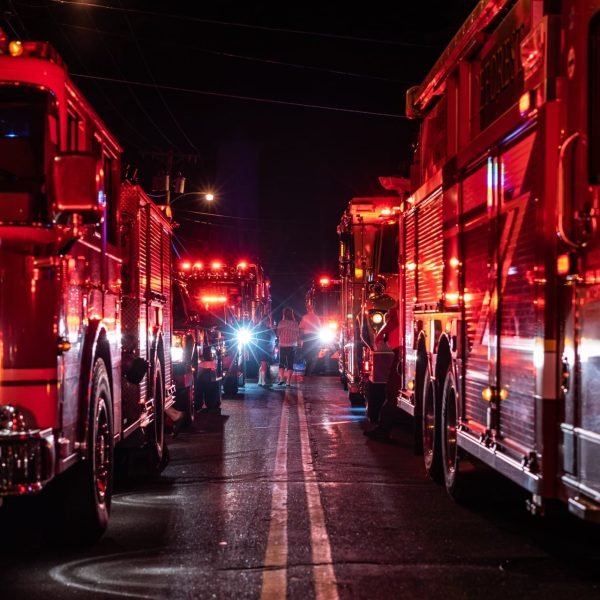Line-of-duty deaths (LODDs) remain a pressing concern in the fire service. According to the CDC website, “The NIOSH Fire Fighter Fatality Investigation Program conducts independent investigations of firefighter line-of-duty deaths and recommends ways to prevent firefighter deaths and injuries.”
A crucial tool in the fight against LODDs is understanding what has come to be called “The NIOSH Five” – which represents the five of the most common contributors to LODDs as identified in NIOSH LODD reports. These are:
-
- No size-up or inadequate size-up
- Inadequate command
- Poor communications
- Poor accountability
- Inappropriate strategy and tactics for conditions
In this post, we explore how SimsUshare, the leading fire simulator, can help departments address these issues effectively, paving the way for a safer fireground.
1. Enhancing Size-Up Accuracy with Simulations
Problem: An inadequate size-up of an emergency scenario can lead to disastrous consequences, including loss of life.
Solution: SimsUshare provides a platform where firefighters can practice sizing up various scenarios in a safe, controlled environment. General James Mattis has said that, “Mistakes are a way of finding what right looks like.” With repeated practice, the simulation experience permits firefighters to learn from mistakes in a zero-risk environment. They can sharpen their situational awareness and decision-making skills, which leads to greater proficiency and confidence when performing size-ups in real-life emergency situations.
2. Strengthening Command Structures Through Training
Problem: Weak command structures can result in a lack of clear directives during an emergency, potentially escalating the situation further.
Solution: Through simulations, fire fighters can be put in command positions to learn the nuances of leading a team in emergency situations. The opportunities to fill command roles at an actual emergency incident are limited. By working on simulated scenarios, potential incident commanders receive opportunities to develop a better understanding of how to give clear and decisive orders. Repetitions in the command role allow participants to hone their leadership and command skills, while gaining a better understanding of how to effectively function using the Incident Command System.
3. Facilitating Seamless Communications
Problem: Poor communication can lead to missteps and confusion, escalating the danger for everyone involved.
Solution: Fire simulations offer a platform where teams can practice their communication skills while using their portable radios. Simulations can be designed to increase operational friction through the incorporation of noise, distractions, and dynamic scenarios that mimic real-life conditions that can tax on-scene communications. By experiencing realistic challenges in training and practicing clear and effective communication protocols, teams can ensure a more harmonized approach during real emergencies. Experiencing these difficulties in training can better prepare participants to overcome similar problems on the fireground, reducing the likelihood of miscommunications that can lead to LODDs.
4. Promoting Accountability Through Regular Drills
Problem: A lack of accountability on the fireground can contribute to freelancing and delays in firefighter rescue in the event of a mayday.
Solution: SimsUshare allows teams to practice their accountability procedures within the simulation exercise. By incorporating use of the accountability system into every simulation, it reinforces its priority and ensures that it becomes the expected standard in emergency incidents. Incident commanders can regularly practice maintaining a tactical worksheet while running the simulated incidents. These repetitions in training will help to foster a culture of responsibility and accountability and help to ensure that everyone on the fireground understands the criticality of accounting for your assigned personnel at all times in an incident.
5. Adapting to Conditions with Appropriate Strategies and Tactics
Problem: Utilizing inappropriate strategies and tactics for the existing conditions can lead to increased risk to citizens and firefighters and result in a destablization of an emergency situation.
Solution: Fire simulators aid in teaching firefighters to adapt their strategies and tactics to different conditions effectively. Like a flight simulator, these exercises expose participants to specific scenarios that provide them valuable experience which they can later draw from in future incidents. Rapid and effective decision-making is dependent on sufficient experience and simulations are a way to build more robust experience banks for firefighters that aren’t going to a lot of fires. Through SimsUshare’s immersive simulations which evolve according to the actions taken (or not taken) by participants, fire officers can learn to assess the changing dynamics of a scenario and modify their approach accordingly, enhancing everyone’s safety and leading to mission success.
SimsUshare’s fire simulator stands as a powerful tool in addressing the NIOSH Five, equipping firefighting teams with the skills they need to prevent LODDs and injuries. By fostering enhanced situational awareness, robust command structures, seamless communications, strong accountability, and adaptable strategies and tactics, simulation training with SimsUshare helps departments become more resilient, better prepared, and able to improve operational safety for both themselves and the communities they serve. Let us leverage the power of fire simulations to work towards a future with zero LODDs.

